Raised Bed Gardening Tips For Beginners
Spring is a beautiful time of year because of the warm weather and the blooming gardens! Raised bed gardening is a great alternative to in-ground gardening because they can make it easier to plant small plots of vegetables and other plants. They can keep your garden looking more organized and can sometimes require less maintenance than a regular garden. From getting started all the way to maintaining your growing plants, here are some simple raised bed gardening tips for beginners.
Benefits of Raised Bed Gardening
Raised garden beds are different from in-ground gardening because it allows you to set up your own convenient space to grow vegetables, plants, and flowers. Whether your yard is small or spacious, you can easily incorporate a raised garden to bed in fit nicely into your space. A raised garden bed is a great way to dedicate a small area or section of your yard to something specific. Before you learn some useful raised bed gardening tips, check out these main benefits of raised bed gardening to see if it’ll work for you:
- More weed control. Raised garden beds allow you to see and tackle weeds quicker and easier, and you can install a weed barrier at the bottom for prevention.
- Better drainage. Thanks to the lifted design of these garden beds, they’re able to drain water efficiently, allowing for healthier plants.
- Higher soil quality. These garden beds are filled with high quality soil that you choose. Additionally, the raised design prevents damage since you’re not walking on it.
- Better pest control. The higher the garden bed, the harder it is for animals and other small creatures to reach. You can even build wire fencing around the bed for extra protection.
Choose The Best Location To Set Up Your Raised Garden Bed
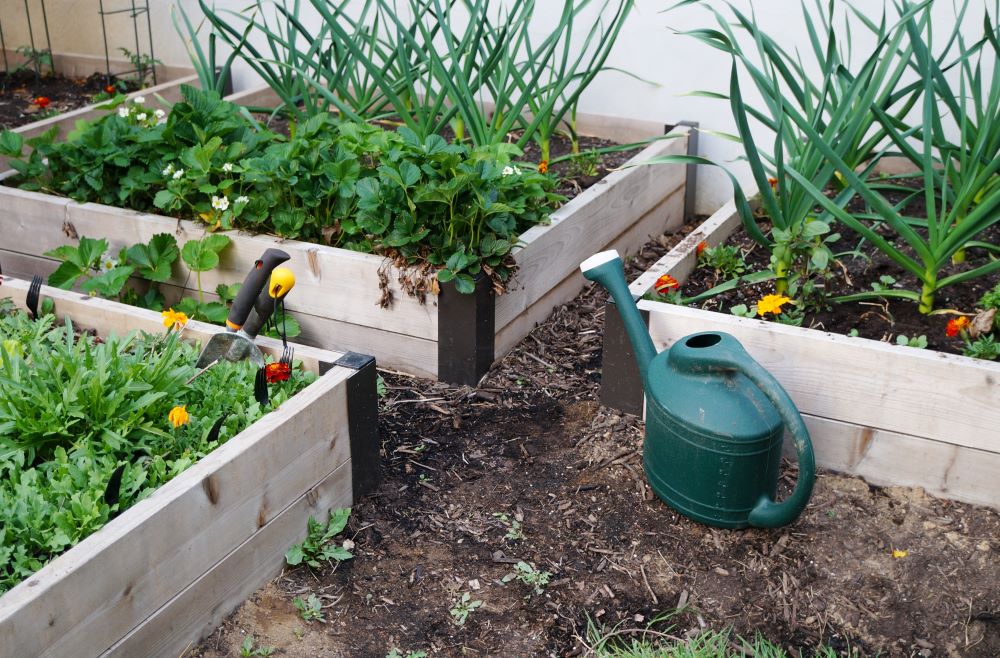
One of the first steps is to choose the best location in your yard to place the raised garden bed. In order to have a blooming garden and healthy plants, it’s highly important to grow your raised garden in an optimal space. There are several factors to take into consideration when choosing the location in your yard.
Whether you’re building a bed from scratch or if you’re setting up a store-bought one, you’ll need to carefully decide on where to set it up. If you’re using a raised bed in addition to planting in the ground, you’ll also need to coordinate properly in order to space everything out. A little bit of planning goes a long way with a garden; take the time to plan in advance to save yourself from any complications later on!
How To Pick An Area For Your Raised Garden Bed
- The first factor to consider is sunlight. Your raised garden bed will need a healthy amount of sunlight in order to grow successfully. Monitor your yard for about a week and take note of which sections get the most sun.
- Next, make sure to choose an area that has easy access to water supply.
- You’ll also want to think consider accessibility if you’ll be picking herbs and vegetables. Place your raised garden bed in an area that’s easy for you to get to.
- Finally, be prepared to move your garden bed later in the season or the following year if the amount of sunlight changes. Sometimes you have to adjust to a shift in sunlight in order to maintain a healthy garden bed.
Use The Right Soil For Your Raised Garden Bed
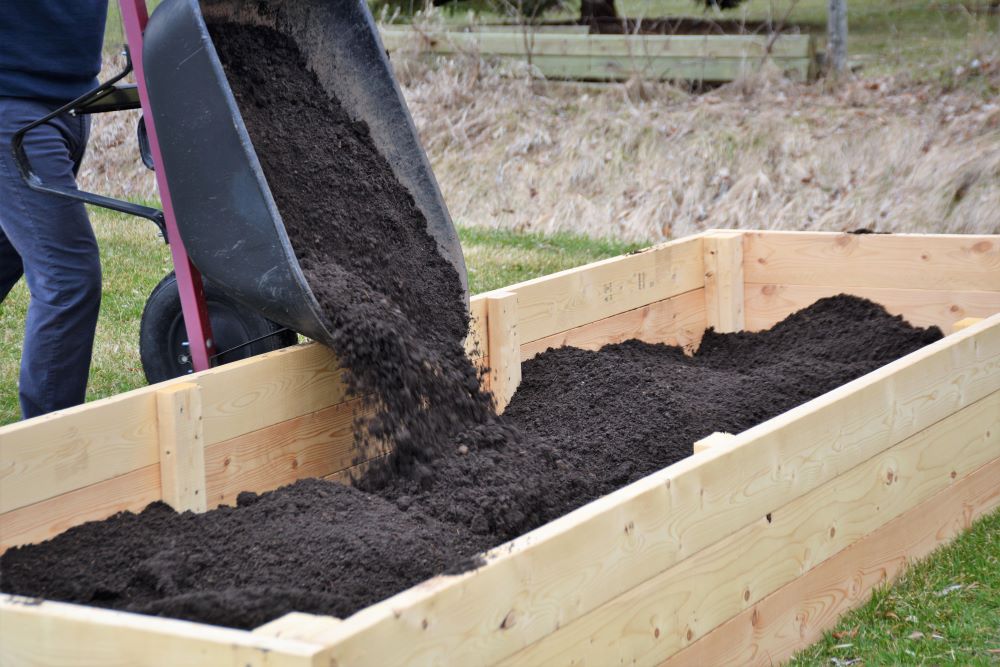
One of the top benefits of raised garden beds is healthier and higher quality soil. That’s because you get to choose the ideal soil mix to fill the bed with, and because the raised design prevents you from walking on top of it. Taking the time to choose the right soil, along with staying on top of the proper care steps will help you have a successful garden.
The best way to get healthy soil is to create a mixture on your own. You can use online soil calculators to determine the exact measurements, but these are the general ingredients you’ll want to use for your blend:
- Topsoil
- Compost
- Soilless Potting Mix
- Fertilizer
If you aren’t sure about mixing it yourself, you can simply buy a pre-mixed soil of the highest quality. Double check with your local supplier or a local gardening expert to help you choose the best soil for your garden. Once you use your pre-mixed soil, make sure to top it off with compost. This will help your garden retain moisture and nutrients.
Make sure to stay on top of your soil’s health throughout the gardening season. Regularly test the pH levels of your soil and adjust the nutrients accordingly to maintain the best quality. You should also keep some compost on hand to replenish your garden bed throughout the season. Having healthy soil is a crucial part of having a healthy garden, so make sure you take the time to learn about the right soil to use based on what you’re planting.
Start By Planting Herbs & Low-Maintenance Vegetables
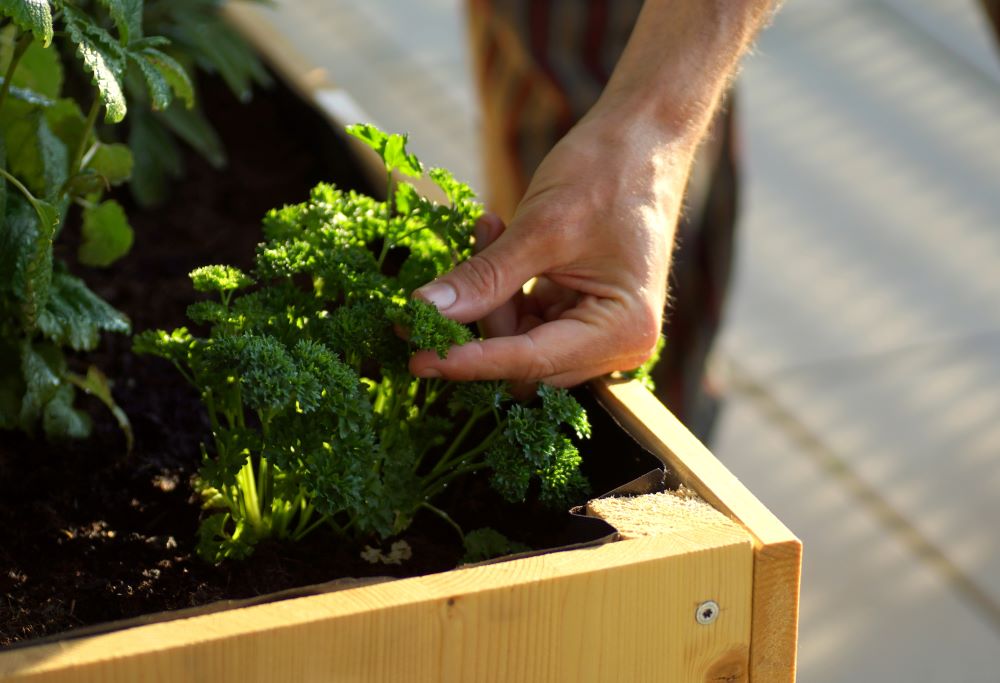
To save yourself from feeling overwhelmed and frustrated, it’s best to choose the easiest and most low maintenance plants for your garden. While these other raised gardening bed tips will make your planting experience easier and simpler, it’s up to you to decide on your planting selection. Choose carefully to have a successful garden.
Herbs are generally one of the easiest things to grow inside of a raised garden bed. This is because they require very little care and very little water. Try planting herbs such as thyme, oregano, parsley, mint, cilantro, rosemary, basil, chives, and tarragon. These herbs are perfect for beginners and they can make nice fresh additions to your meals. If you also want to plant vegetables in your garden bed, make sure to check out the easiest vegetables to grow below.
Easiest Vegetables To Grow In A Garden Bed
- Cherry tomatoes
- Carrots
- Peas
- Cucumbers
- Leaf lettuce
- Radishes
- Green beans
Plant Your Seeds In Rows For Easier Weeding Later On
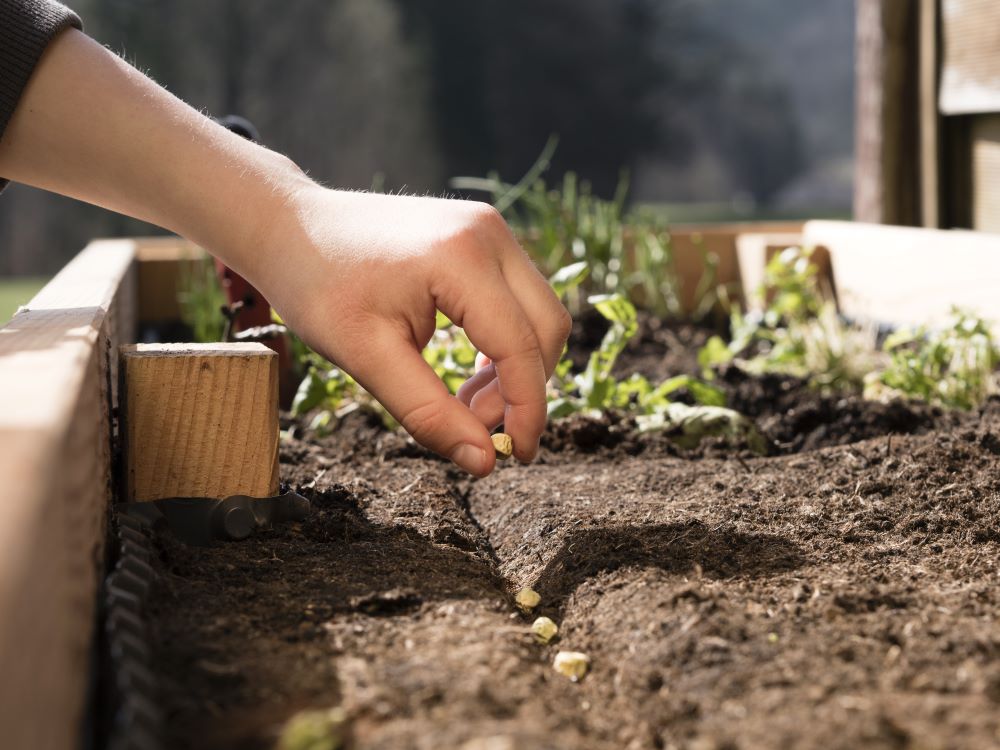
When planting seeds in your raised garden bed, it’s important to be strategic with your spacing and layout. Depending on the size of the plants you’re growing, you should be mindful of how far apart you place your seeds, how you arrange your seeds, and how many seeds you plant. Planning this out in advance will save you from any complications as the plants begin to grow.
Planting your seeds in rows will not only allow for proper spacing, but it will also help you detect weeds quicker. The spacing will help you more easily distinguish the weeds from the plants, allowing you to quickly pull them out as they pop up. This also will give you some leeway with the weeds because the extra space acts as a barrier to protect the weeds from interfering with your plants. Lay your seeds out in rows, rather than loosely scattering them, to keep your garden bed more organized.
Make sure to also space your seeds at least six inches apart from one another. This spacing will allow some extra room for growth. You may want to adjust the distance depending on what you’re growing. Some vegetables and plants may need more space than others. Arrange your garden bed accordingly to assure the best spacing and sectioning for your specific selection of plants.
Keep Up With Raised Garden Bed Maintenance To Assure Healthy Plants
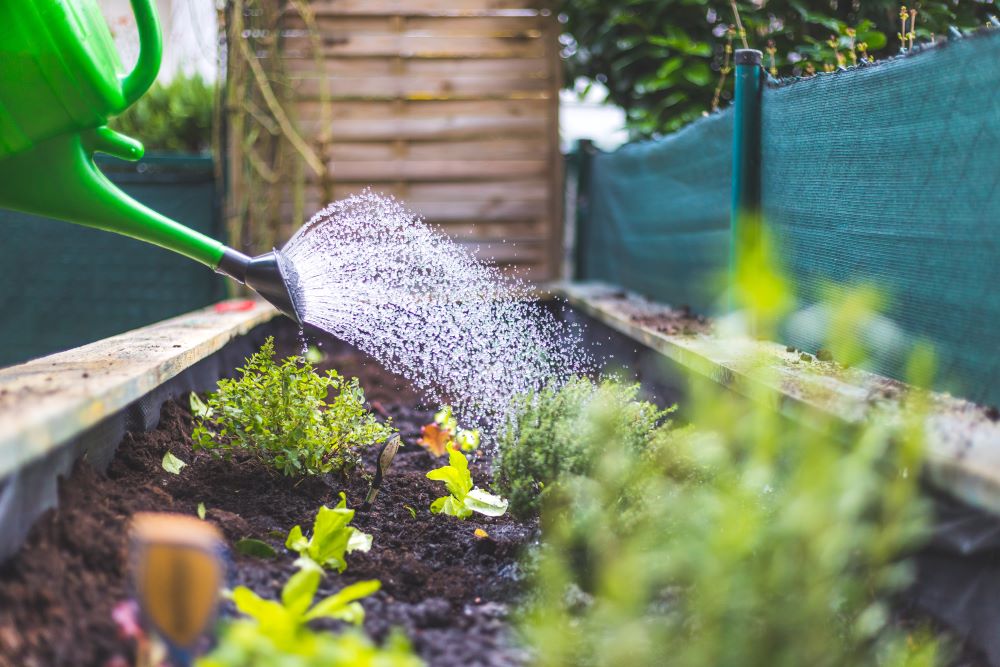
Of course one of the most important raised gardening bed tips is to keep up with the care and maintenance of your garden. Without the proper care steps, you won’t be able to accomplish a flourishing spring garden bed. Make sure you take the time to learn all the necessary maintenance steps for the specific types of plants and vegetables that you’re growing. Regular care and maintenance will help you stay on top of any complications along the way.
How To Care For Your Raised Garden Bed
- Water it regularly. Watering your plants on a regular basis is a crucial part in keeping them healthy and growing. Raised garden beds drain water quickly, so it’s important to continuously prevent them from drying out. Use a drip irrigation system or a soaker hose to water your garden as needed.
- Pull weeds. Just like a regular garden, weeds will start to pop up in raised garden beds. Make sure to stay on top of this and pull them out as you see them.
- Add mulch. Mulch will help slow your garden bed from losing water and it’ll also minimize weed growth. Refresh the mulch throughout the season as needed.
- Pick vegetables in a timely manner. If you’re growing a variety of vegetables, it’s important to learn all about when they’re each ready to be picked. Check your vegetables regularly to see if they’re ripe.
Now that you’ve learned some raised bed gardening tips for beginners, check out our Garden & Outdoors section to get everything you need for your spring garden! Find garden tools, live plants, outdoor decorations, solar lighting, and much more.

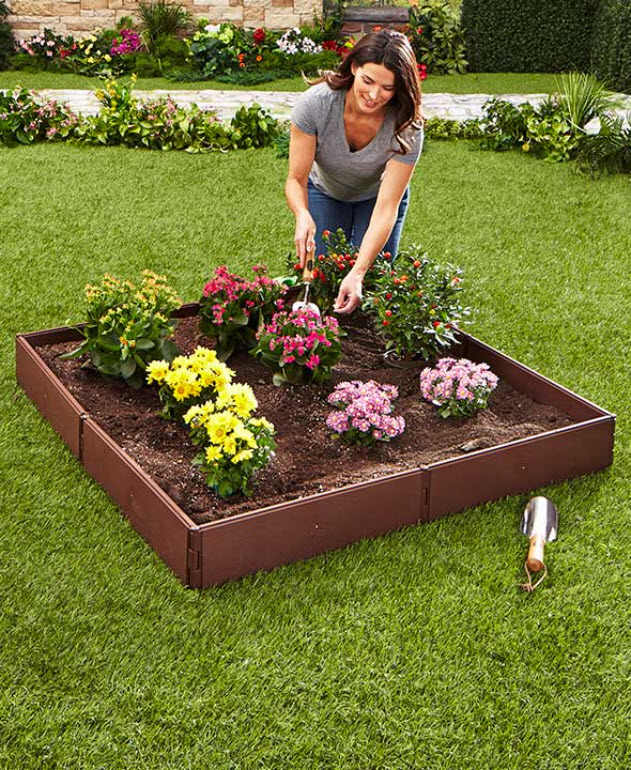






Love your products
Beautiful
Beautiful items, love this site
What should the depth of the garden be?
Hi Jennie,
We recommend the depth of a raised garden bed to be 8 to 12 inches. For a vegetable garden, you’ll want the depth to be 12 to 18 inches.